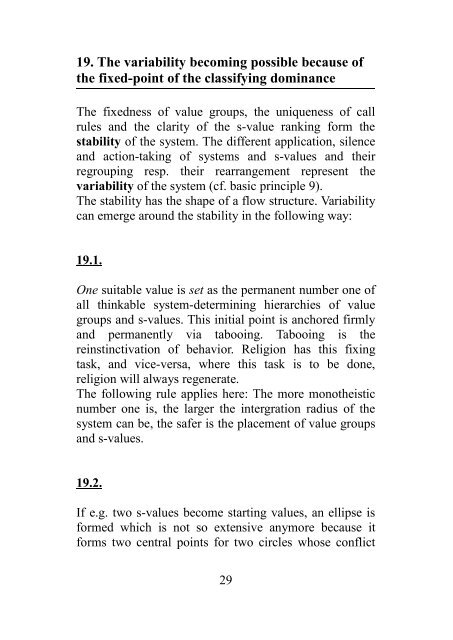Part I - David Greve
Part I - David Greve
Part I - David Greve
You also want an ePaper? Increase the reach of your titles
YUMPU automatically turns print PDFs into web optimized ePapers that Google loves.
19. The variability becoming possible because of<br />
the fixed-point of the classifying dominance<br />
The fixedness of value groups, the uniqueness of call<br />
rules and the clarity of the s-value ranking form the<br />
stability of the system. The different application, silence<br />
and action-taking of systems and s-values and their<br />
regrouping resp. their rearrangement represent the<br />
variability of the system (cf. basic principle 9).<br />
The stability has the shape of a flow structure. Variability<br />
can emerge around the stability in the following way:<br />
19.1.<br />
One suitable value is set as the permanent number one of<br />
all thinkable system-determining hierarchies of value<br />
groups and s-values. This initial point is anchored firmly<br />
and permanently via tabooing. Tabooing is the<br />
reinstinctivation of behavior. Religion has this fixing<br />
task, and vice-versa, where this task is to be done,<br />
religion will always regenerate.<br />
The following rule applies here: The more monotheistic<br />
number one is, the larger the intergration radius of the<br />
system can be, the safer is the placement of value groups<br />
and s-values.<br />
19.2.<br />
If e.g. two s-values become starting values, an ellipse is<br />
formed which is not so extensive anymore because it<br />
forms two central points for two circles whose conflict<br />
29


